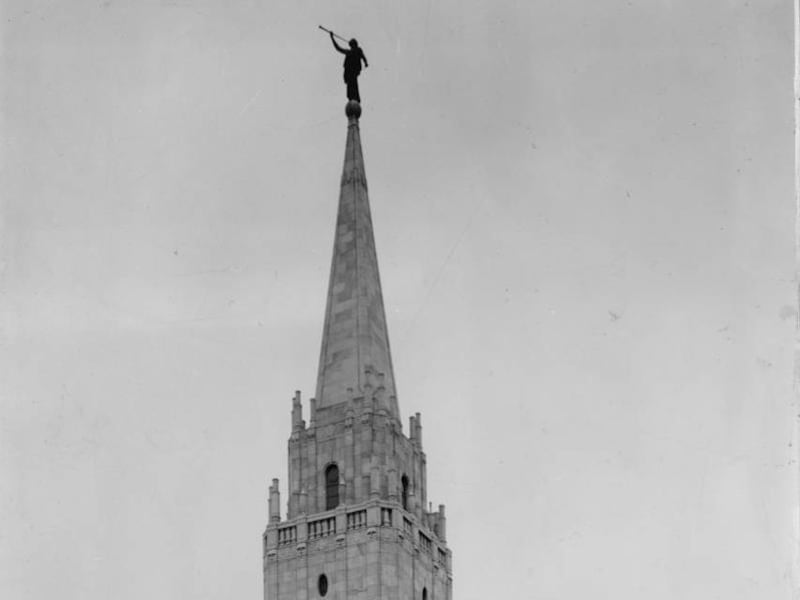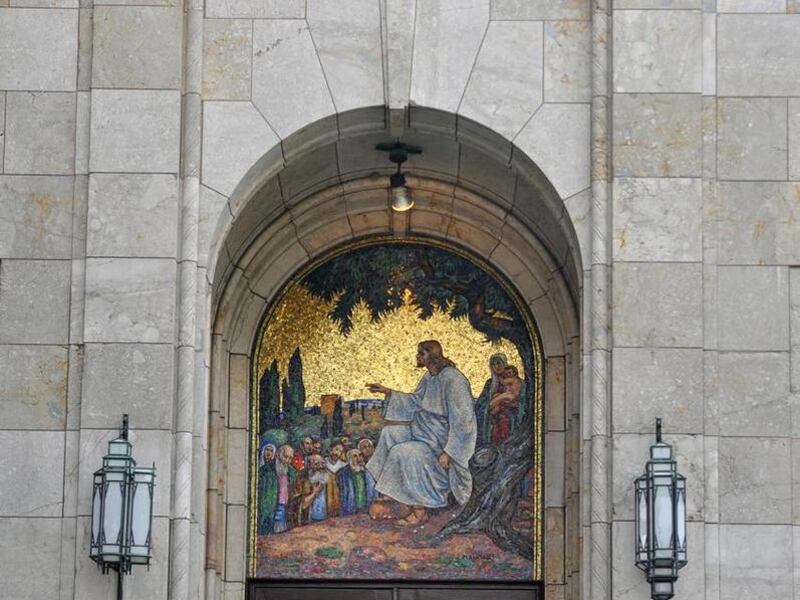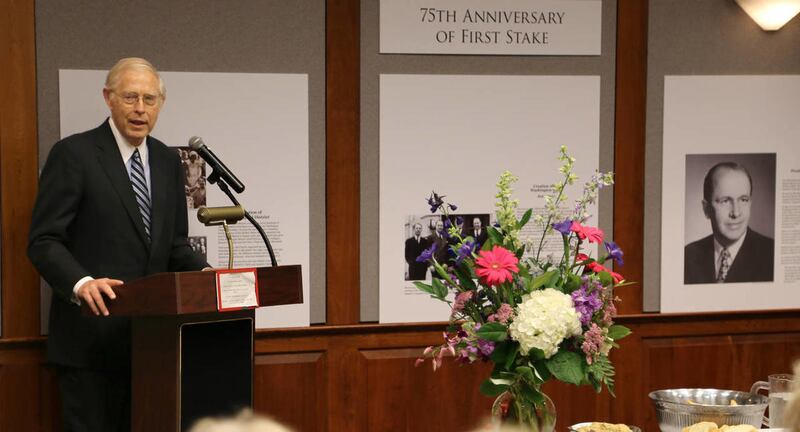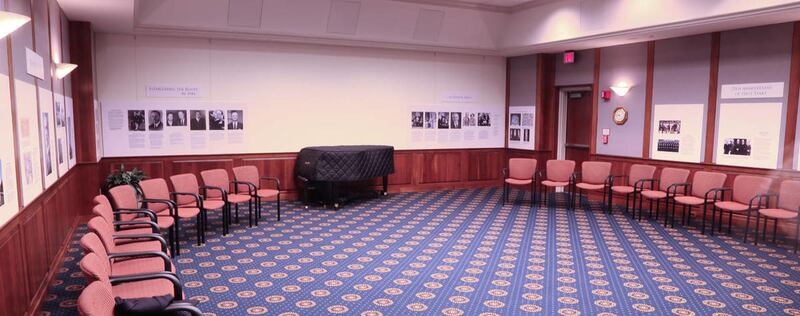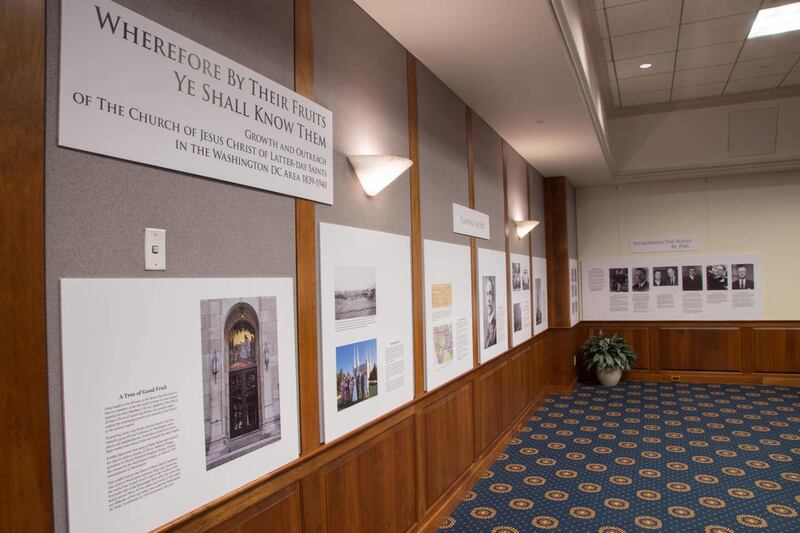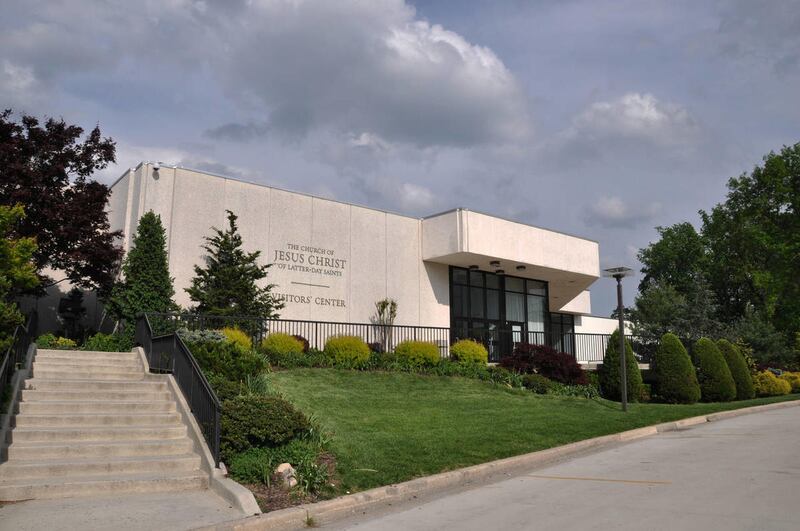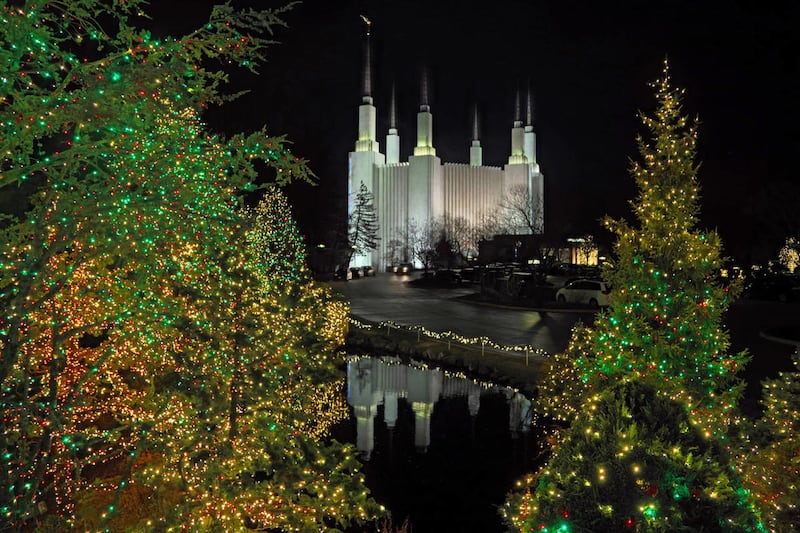WASHINGTON, D.C. — The Washington D.C. Temple Visitors' Center is celebrating the 75th anniversary of the first stake of The Church of Jesus Christ of Latter-day Saints in the Washington, D.C., area with an exhibit that shows the growth of the church dating back to 1839 when Joseph Smith first visited the nation’s capital to the creation of this stake in 1940. It was the second stake created east of the Mississippi River since the Saints left Nauvoo, Illinois.
“Latter-day Saints were not welcomed into Washington society when they first came to the capital area,” said Page Johnson, a member of the Visitors' Center Cultural Arts Committee who researched and wrote the exhibit narrative. “But through their service, integrity, scholarship, entrepreneurship and testimonies, they slowly became accepted in their careers and communities. Today they are part of the very fabric of Washington,” she added.
According to Elder John Fowler, the temple Visitors' Center director, this pioneering spirit is still part of the LDS story today.
Glimpses of those who helped the LDS Church grow
The exhibit portrays that just a little more than 100 years ago, only a handful of Mormons lived in Washington, D.C. Today, 85,000 members live within 100 miles of the Washington D.C. Temple and contribute in myriad ways to the life and culture of the city.
Ralph W. Hardy, former Area Seventy and a former president of the Washington D.C. Stake, pointed out that the first stake organized in the nation’s capital encompassed an area that today has 26 stakes and the largest concentration of members outside the western United States.
“We are indebted to exceptional leaders of the past such as U.S. Senator Reed Smoot, President Ezra Taft Benson, J. Willard Marriott Sr. and others who helped in establishing the church in the greater D.C. region,” he said.
The exhibit, called “Wherefore By Their Fruits Ye Shall Know Them,” is captured in a photo of a mosaic of Jesus Christ teaching the Sermon on the Mount. The mosaic was designed by Mahonri Young, grandson of President Brigham Young, and was created for the Washington Chapel, a historic LDS meetinghouse in Washington that was built in 1933 and used until 1975. (see sidebar)
The exhibits tell the story of that growth in a series of panels divided into three main sections. The first section is titled “Planting the Seed,” and it describes early LDS experiences in Washington, from Joseph Smith’s meeting with President Martin Van Buren in 1839 to Utah’s admission to the Union in 1896, and the controversy surrounding Sen. Reed Smoot’s religious faith and his seating as a member of Congress.
The second section, “Nourishing the Roots,” highlights the contributions of 12 LDS members including President J. Reuben Clark, J. Willard Marriott Sr. and James Henry Moyle. President Ezra Taft Benson is featured as the first president of the Washington Stake along with his counselors Samuel R. Carpenter and Ernest L. Wilkinson. In his remarks at the opening of the exhibit on June 13, Scott Parker, former bishop of the Capitol Hill Ward and a grandson of President Benson, observed how special the Washington area is to his family.
“My Grandpa Benson always taught us to be loyal to God, to family and to country. Living the gospel in Washington certainly helps brings those three things together for so many of us,” he said.
Melanie Colton, a member of the visitors center's Cultural Arts Committee, who is the chairwoman of the project, added that the contributions and examples of early LDS members prepared the way for her own family. “My children have been able to grow up in this area completely supported and respected by their peers who belong to other faiths,” she said.
The third section, “Sharing the Bounty,” details the “fruits” or outreach of members of The Church of Jesus Christ of Latter-day Saints in Washington, D.C., today. This includes various interfaith initiatives like Day to Serve and Mormon Helping Hands, concerts by the Mormon Choir of Washington, the Festival of Lights at the Visitors’ Center during the Christmas season, the Washington Seminar for Brigham Young University student interns, and the LDS Church Office of Public and International Affairs. Exhibit panels also explain the bishop’s storehouse, church humanitarian efforts and family history centers.
“Many of the Saints who came to this area before 1940 received an internal spiritual call to move to the Washington area to help build up the church. This historical exhibit depicts those essential beginnings, and gives people a special feel for what their own mission is today,” said Ralph Mecham, a church member with deep roots in Washington.
John Neumann, a Catholic from McLean, Virginia, who visited the exhibit, said, “I have lived in the Washington region for 45 years. I have seen the LDS Church grow over the years and was impressed to learn about the many contributions made by church members to Washington life, politics, government, business and culture.”
The church today in Washington, D.C.
In the Washington metro area there are now two Chinese-speaking branches, a French-speaking branch, and many Spanish-speaking branches and wards. In addition, there is an American Sign Language branch whose members include students from Washington’s Gallaudet University.
“This summer, we are scheduled to host over 2,500 LDS young men and women for various youth conferences and baptismal experiences. We also will host thousands of first generation members of the church who make up a significant percentage of our guests," Elder Fowler said. We believe faith is kindled by those who have faith. We hope the stories of sacrifice and unflinching courage so prevalent and powerful in the exhibit will prove a wonderful faith-building experience for both groups.”
Carolyn Colton developed the graphic design for the exhibit, which will be on display throughout the summer.
_____
The story of the historic Washington Chapel
One special feature of the exhibit is a description and photos of the Washington Chapel, where members of The Church of Jesus Christ of Latter-day Saints worshipped and fellowshipped from 1933 to 1975.
“There was nothing like it in Washington,” one exhibit panel states. “Utah birdseye marble and a 10-foot gold-plated statue of Moroni on the top made the Washington Chapel unique. It was the first major church building in the area for an LDS congregation, and it quickly became a landmark at the corner of Sixteenth Street and Columbia Road in the District.
"The building itself became the heart of the neighborhood as church members invited neighbors to (attend) musical recitals featuring a 5,000-pipe organ, choir performances, Thanksgiving dinners, dances, basketball and volleyball nights, and theatrical productions. During World War II, soldiers on leave could count on meals and sleeping cots on the gym floor.
“For 42 years, families and single adults served in this unforgettable building. Many were married here and traveled back West to be sealed in a temple. But when time, humidity and pollution finally began to degrade the building, it became too expensive to maintain. On Aug. 31, 1975, members sadly gathered for one last meeting in the chapel before the building was sold. It is owned today by another church, but its stained glass windows and a mosaic of Christ are still in place.”
The statue of Moroni is now in the LDS Church History Museum in Salt Lake City.
Laurie Snow Turner is an LDS public affairs director and writer in the Washington, D.C., area.

